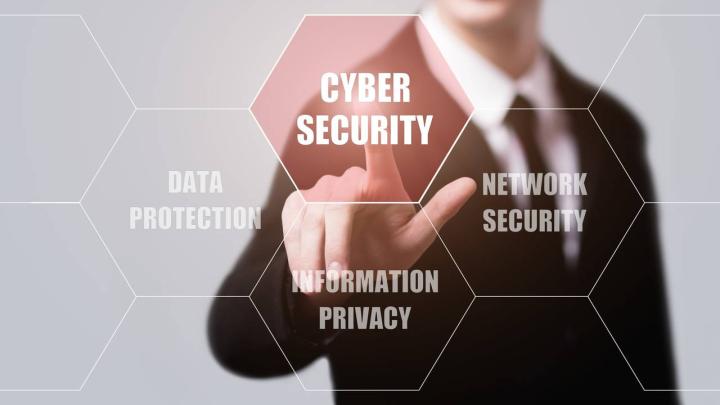
CISOs and other security leaders are tasked with protecting their organizations from cyber attacks. That means developing and implementing the policies, controls, and procedures that reduce risk and ensure the safety of sensitive data. It also means keeping the cybersecurity program alive and well-funded.
In other words, security leaders are fighting on two fronts. When executing a cybersecurity plan, they must employ two distinct yet equally important skill sets: the technical skills to mitigate risk, and the strategic skills to make the case for cybersecurity to their colleagues.
Striking a balance between these two categories is tricky. We’ve got some tips for CISOs and other security leaders looking to execute their cybersecurity plans effectively and achieve sustainable results.
Hire the Right People
The strategic responsibilities of cybersecurity shouldn’t fall solely on the shoulders of the CISO or program director. Having strategic-minded IT security personnel can be a huge asset. While technical ability is certainly still the first concern when searching for cybersecurity employees, it pays to find candidates with great people skills as well.
[Get Free Ebook: The Secret to Creating a Cyber Risk-Aware Organization]
This attitude can also help resolve the cybersecurity talent shortage. If there aren’t enough qualified technicians to fill out your team, consider individuals with strong strategic experience in other fields who might be trained to complete the technical tasks as well.
Think Like a Board Member
Boards of Directors are becoming more and more active in their organization’s cybersecurity programs, with 45% of Board members saying they actively participate in setting the security budget at their company.
In order to successfully execute a cybersecurity plan, CISOs and other security leaders need buy-in from their Board. Achieving executive buy-in is a complex topic that we’ve covered extensively in the past. In brief, however, the answer comes down to thinking like a Board member.
When determining budgets, the Board is primarily concerned with ROI — an indicator that cybersecurity teams have historically been able to avoid on account of the effectiveness of security initiatives being difficult to quantify. However, many Boards are now reeling in cybersecurity budgets and questioning whether expensive products and programs are worth the money.
To get ahead of this question, security leaders need to be able to prove the ROI of their efforts to the Board. One way to accomplish this is using security ratings to benchmark the effectiveness of their initiatives.
Security ratings, like those offered by Bitsight, estimate the likelihood of data breaches based on a variety of externally observable risk factors. With security ratings, security leaders can demonstrate when their program is falling behind, and when it’s excelling compared to competitors, peers, or the industry average.
Implement Continuous Monitoring
Two of the principal responsibilities of a CISO are assessing the cybersecurity posture of their organization and keeping a pulse on the overall cyber risk landscape.
In the past, both of these processes were long-term endeavors. Risk assessments might have been conducted monthly or quarterly, and gathering risk intelligence was a manual, research-intensive task.
Now, however, sustainable cybersecurity programs include efforts to continuously monitor both of these subjects. Continuous monitoring enables security leaders to understand their vulnerabilities on a moment-by-moment basis, reducing the risk of successful attacks.
Security ratings are valuable tools when it comes to continuous monitoring, too. Some security ratings can be broken down into a variety of risk vectors, giving security leaders deep insight into their real-time risk.
When applied to third-party networks, security ratings can also be used to quantify real-time vendor risk. In addition, SIEMs and threat intelligence software can be used to continuously monitor the behaviors of intruders at your organization and across industries.
Reconsider Risk Ownership
The success of a cybersecurity program depends mainly on whether or not the organization experiences a costly cyber attack. However, no cybersecurity plan is perfect — with threats evolving constantly, there’s always a chance, no matter how slim, that risk could become reality.
In this way, all cybersecurity plans are set up to fail. Even if you execute everything exactly as you had intended, with the full backing of your Board, your organization is still exposed to some amount of cyber risk.
While many of us come into this field with a “stand and fight” attitude, it’s worth considering whether it’s necessary for the cybersecurity team to take ownership of 100% of the cyber risk at their organization.
Cyber insurance is one way to transfer some risk away from the IT department. While security leaders will continue to protect their organizations to the best of their abilities, cyber insurance allows for the reduction of some of the financial consequences of cyber attacks. Backup plans are not a sign of weakness — they can be a valuable asset for executing successful cybersecurity plans.
Ultimately, executing a cybersecurity plan isn’t a one-time undertaking. Rather, it’s a perpetual fight to protect one’s systems and remain in the good graces of senior leadership. Taking some of these tips into account, it’s possible to execute a cybersecurity plan in a way that promises stability and sustainability in the long-term.